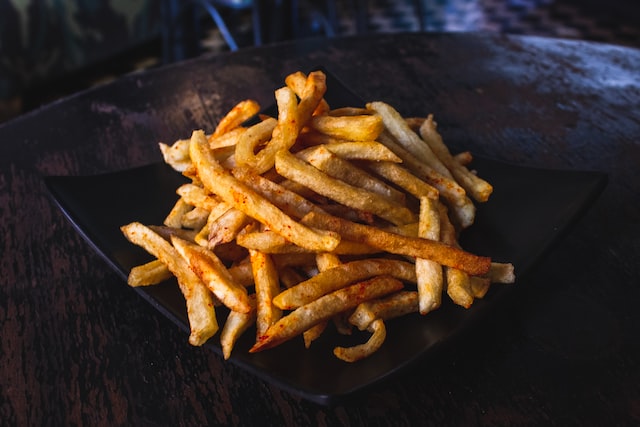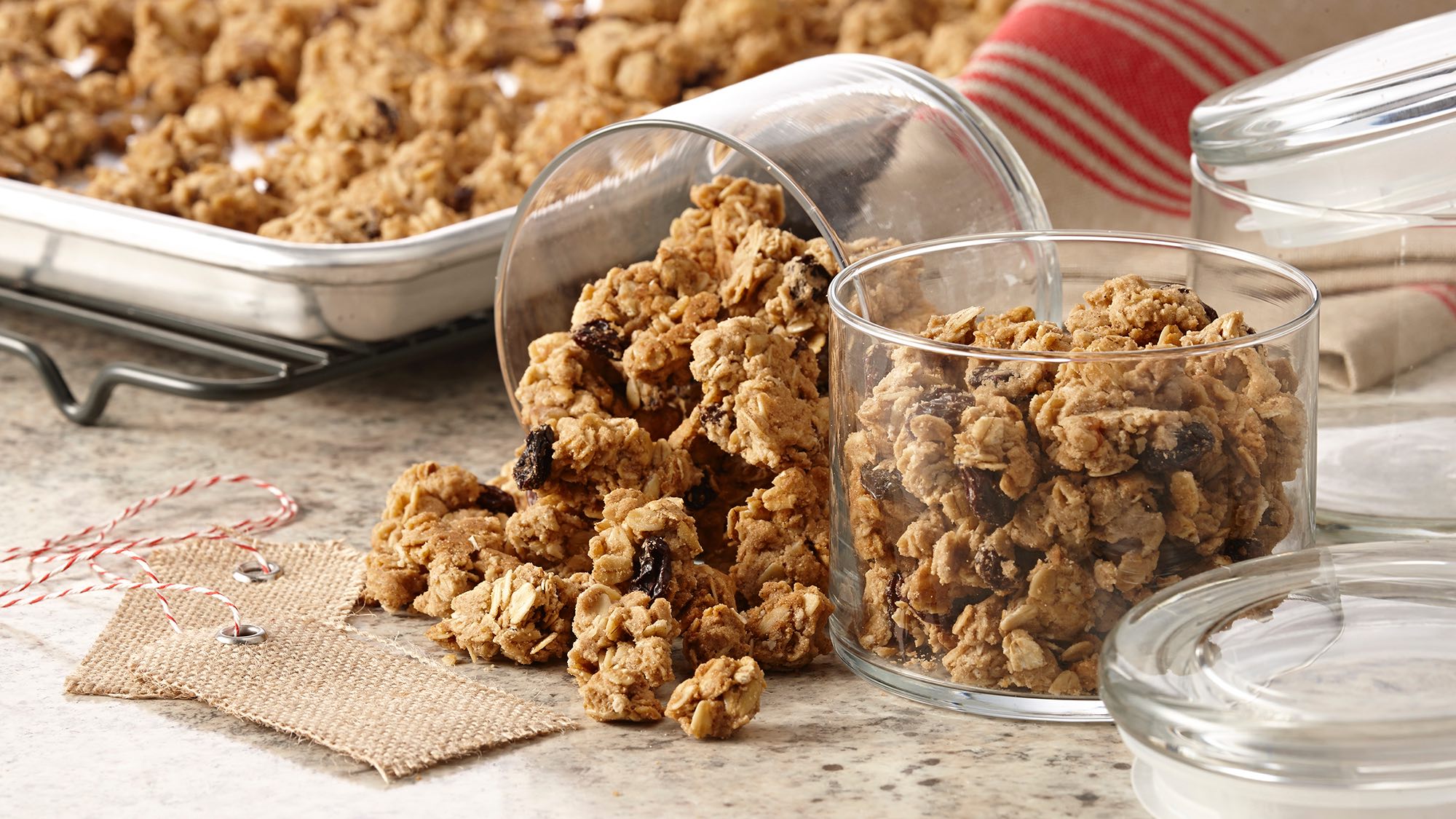Have you ever ordered "fries for the table" when out to eat at a restaurant? French fries can be so enticing, and the quality of restaurant fries can often exceed the quality of those you may have attempted at home. Find out why, and learn how to make restaurant-quality fries at home without a deep fryer or even all that oil.
While you can make french fries at home quickly in the oven or in your air fryer, there's something special about getting french fries at a restaurant. Crispy on the outside and perfectly creamy on the inside, there's a secret that many restaurants use to get the ideal french fry. Read on to find out why french fries taste better from a restaurant, plus secrets from a restaurant owner who specializes in fries.
Blanching: The Reason Why French Fries Taste Better
Your potatoes need to take two separate dips in hot oil to reach restaurant quality. Oil-blanching is a two-part process that reduces the moisture and starch content in your fries, helping them crisp up.
The first step precooks the fries for longer at a lower temperature (generally around 275°F to 300°F for three to five minutes, depending on thickness) so they cook thoroughly but do not become entirely golden brown. The fries are then drained, cooled and chilled in the fridge. At this point, the fries should be pale with no browning. The final step browns and crisps the fries at a higher temperature for a shorter period of time (about 350°F for one to three minutes). Looking for that perfect golden-brown color during this step is more important than watching the clock.
Tanya Walker, owner of Saus in Boston, features made-from-scratch fries and unique homemade sauces on their menu and was able to shed additional light on why blanching makes such a difference.
"It helps create a crispier fry! Frying first at a lower temperature helps pull out water content from the potato. So the second time you fry, you're getting a french fry with some snap," Walker shares.
But the benefit is twofold. Not only does it create a tasty fry, she says, it "also helps create a faster product. We're a fast-casual concept and people want their food out quickly. Frying without a blanch would take a LOT longer."
Type of Potato & Oil
Potatoes that are high in starch, like Idaho russet potatoes, are dense and low in moisture, which makes them ideal for frying. Waxier potatoes contain too much water and can turn out "soggy, oily and brown," says Walker.
But Saus' secret is more than just the right potatoes. "Old Idaho potatoes fry up best. We actually cellar age our potatoes. Some magic happens with the sugars and starches as they age, resulting in the crispiest fry," Walker says.
For frying, the key is to use a neutral oil with a high smoke point, like refined peanut, canola or safflower oil. However, there are other options used as well, including Saus' oil of choice, which is a vegetable oil blend. "Duck fat is an indulgent choice. Since fries are the cornerstone of our restaurant, we fry in a vegetable oil blend. It's got mass appeal and isn't a major allergen like peanuts."
Proper Seasoning
Some restaurants may stick to salt and pepper for seasoning, while others use a seasoned salt or a seasoning blend, but the method of how fries are cooked is what makes sure the seasoning actually sticks to the fries properly.
If you're deep-frying french fries, they should be seasoned immediately after they're taken out of the oil. If you're baking or air-frying at home, season before cooking. The seasoning will stick to the oil during the cooking process.
Fresh vs. Frozen
Not all restaurants put the effort into french fries, especially if they're not the star of the show, says Walker. "Fries are the main event at Saus, so we put the effort in. That said, we throw no shade to those who use frozen."
As long as they are properly prepared and well seasoned, frozen fries can still turn out perfectly edible. But it's not just about the fry, it's about what they're being enjoyed with!
"Are they better fresh? Yes. Can you tell the difference? Maybe, if you're paying close attention. But once you slather a french fry in your chosen condiment, it's heavenly whether fresh or frozen," Walker shares.
Did you know you can also freeze your fries?
Photo by Louis Hansel
Consistent Slices
Whether you're slicing up fries or dicing or mincing veggies, it's important to cut them the same shape and size so everything cooks as evenly as possible. For example, cooking larger fries in the same batch as shoestring fries wouldn't yield the best results. While the shoestring fries might turn out OK, the larger fries likely wouldn't be thoroughly cooked on the inside or browned on the outside.
Restaurants typically have prep teams dedicated to getting high-volume items like fries ready, and they're skilled in evenly peeling, slicing and cutting to avoid any over- or undercooked fries.
Staff Expertise
From the kitchen staff to front of house, every person on the staff of a restaurant plays a role in the overall experience.
From hand-cutting the fries to rotating the potatoes, the kitchen team is busy churning out the best possible fries. "Our kitchen team is trained to rotate our potato inventory in our cellar. They monitor the boxes and make sure they're ordering enough in advance so the potatoes have just the right amount of time to age," says Walker.
But sometimes, accidents happen. "We've had training mistakes when a new person pulls a newer box of potatoes to cut for the day," Walker shares. However, an experienced team "can tell immediately that the fries are wrong."
Once the kitchen team has done their job, it's up to the front of house to get it to the customer to enjoy and set the tone for the dining experience. "Our front of house team sets the vibe, welcomes regulars and newcomers alike, and makes sure everyone knows they're about to eat something awesome. Our team, like our fries, is a cornerstone to our success and everything on our menu is made from scratch. Our guests are paying a premium for french fries, and our staff plays a key role helping the guests understand why," Walker adds.
Equipment, Space, Time
Even with compact models available, the average household likely doesn't have a deep fryer ready to whip out at any given moment. Especially because the cleanup process can be messy (and large amounts of cooking oil can be hard to properly dispose of), air fryers have continued to grow in popularity as an at-home alternative to frying food. Compared to a deep fryer, air fryers offer a multipurpose and healthier alternative to achieving crispy and delicious food without having to take the time to set up a deep fryer.
What You Can Do To Easily (& Healthfully) Level Up Your Fry Game: Boil & Bake
We know that blanching in oil produces a great result, but you don't actually need to do it to enjoy restaurant-quality fries at home! EatingWell Test Kitchen/Portfolio Manager Adam Dolge's technique gives you the same results without the deep fryer getting involved.
Simply boil cut-up potatoes in salted, acidulated water before putting them in the oven. The salt will extract excess moisture from the potatoes while the vinegar works to give a crispy exterior and preserve their shape. The end result is a crave-worthy crispy fry with a creamy center.
Once your fries are done, dress them up with a sprinkle of feta, oregano and lemon zest for the perfect Feta Fries.
Bottom Line
A lot goes into making restaurant-quality french fries, from labor and expertise to equipment and proper seasoning. The key step to making fries that have that characteristic light golden-brown and crisp exterior and pillowy interior is blanching in oil. Since the technique can be a hassle for home cooks, our boil-and-bake method is an excellent option.
This article was written by Jacqueline Weiss from EatingWell and was legally licensed through the Industry Dive Content Marketplace. Please direct all licensing questions to legal@industrydive.com.








